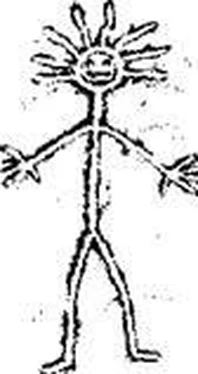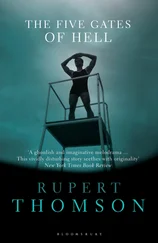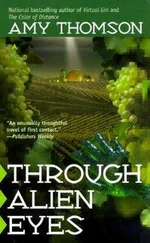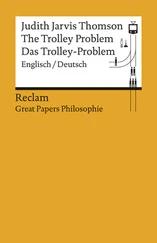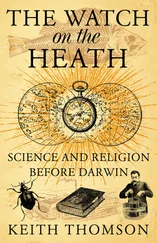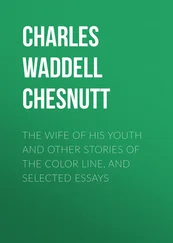Amy Thomson - The Color of Distance
Здесь есть возможность читать онлайн «Amy Thomson - The Color of Distance» весь текст электронной книги совершенно бесплатно (целиком полную версию без сокращений). В некоторых случаях можно слушать аудио, скачать через торрент в формате fb2 и присутствует краткое содержание. Год выпуска: 1995, ISBN: 1995, Издательство: Ace Books, Жанр: Фантастика и фэнтези, на английском языке. Описание произведения, (предисловие) а так же отзывы посетителей доступны на портале библиотеки ЛибКат.
- Название:The Color of Distance
- Автор:
- Издательство:Ace Books
- Жанр:
- Год:1995
- ISBN:0-441-00244-7
- Рейтинг книги:4 / 5. Голосов: 1
-
Избранное:Добавить в избранное
- Отзывы:
-
Ваша оценка:
- 80
- 1
- 2
- 3
- 4
- 5
The Color of Distance: краткое содержание, описание и аннотация
Предлагаем к чтению аннотацию, описание, краткое содержание или предисловие (зависит от того, что написал сам автор книги «The Color of Distance»). Если вы не нашли необходимую информацию о книге — напишите в комментариях, мы постараемся отыскать её.
Nominated for Philip K. Dick Award in 1996.
The Color of Distance — читать онлайн бесплатно полную книгу (весь текст) целиком
Ниже представлен текст книги, разбитый по страницам. Система сохранения места последней прочитанной страницы, позволяет с удобством читать онлайн бесплатно книгу «The Color of Distance», без необходимости каждый раз заново искать на чём Вы остановились. Поставьте закладку, и сможете в любой момент перейти на страницу, на которой закончили чтение.
Интервал:
Закладка:
“Leave me alone, leave me alone!” she moaned, tears welling behind her eyelids. It reminded her of her first visit back to her mother’s people, how the village children had poked and prodded at her in her foreign clothes, only this time she didn’t have any relatives to shoo away the curious. She was more alone than she had ever been before.
A gentle hand brushed her shoulder. She brushed it away. When it rested on her shoulder again, Juna looked up angrily, ready to fend off another curious alien. It was her guide. She looked around. The other aliens, except for the sick one, had all left. Her guide led her to a small storeroom near the bottom of the tree. In the room was a pile of empty gourds lying with their lids askew, stacks of dried seaweed, a bundle of hollow reeds, coils of rope, neatly folded nets, empty baskets, and a big mound of dry grass. A beetle scuttled out over her feet as she stepped inside. The alien hung a mat over the door and left her alone.
Juna inspected the wall for insects. She found a section that seemed free of visible crawling creatures, leaned against it, and closed her eyes, savoring the solitude. She longed to wake up and find that this whole experience had been nothing more than an exceptionally vivid nightmare, that she was safe in her bed back at the base. Memories of home washed over her with a sudden poignant intensity. The thick milky light falling on the neat, whitewashed walls of her father’s house. The wide stretch of vineyards curving up and away toward the green fields of the satellite’s artificial sky. The sweet smell of hay in the barns, and the small comforting sounds of the horses in their stalls. All of these returned sharp and clear to her in this alien place, filling her eyes with fresh tears.
Juna shook her head. She needed to think of something else besides how homesick she was, or she would go crazy. To distract herself she imagined the reaction at base camp when she strode out of the jungle, accompanied by a pair of sentient aliens. Kinsey, the Alien Contact specialist, would kiss her feet in gratitude. A-C Specs were probably the most frustrated people in the Survey. They spent their entire careers as supercargo on Survey ships, doing scutwork, writing theoretical papers, and hoping that someday someone would discover an alien race.
Humans had so far discovered only three alien races. Two of those had been long extinct. The third, the Sawakirans, had fled human contact, whole cities vanishing into the wilderness. The few Sawakirans that humans contacted died a few hours later. It was not entirely clear whether the deaths were from fear, sickness, or suicide. The Survey put the Sawakirans’ planet on the proscribed list and left them alone.
Kinsey would cut off his right arm for the chance to be turned green and live in a bug-infested tree with a bunch of smart frogs. All Juna wanted was to go home, take a nice hot bath, eat food that had been cooked first, and talk to people she could understand.
Tears of self-pity welled up. Juna shook her head, angry at herself. Tears wouldn’t change things. It was time for her to stop acting like a frightened child and start acting like a scientist. She had been given an incredible chance to study an alien race. This discovery could make her career; she shouldn’t waste time being homesick.
First she needed to learn to communicate. She reviewed everything she had learned about the aliens’ language. The patterns on their skin seemed to carry information; the colors showed the emotional content of their words. Blues, particularly turquoise, were associated with pleasure, and greens with approval or agreement. Reds and oranges were related to anger and fear. Purple was connected with curiosity and questions.
She could now recognize a few very simple words: yes, no, food, water, their term for her, and some names. “Yes” was a series of three horizontal bars. “No” was three vertical bars. Food was a colored dot or circle inside a green oval. Water was a series of three vertical dots, usually blue or green. Her guide’s name-symbol looked like a connected pair of blue spirals. The alien who had accompanied Juna’s guide in the forest had a name sign resembling a complex triangular looped knot. The sick alien’s name-symbol consisted of three sets of concentric circles, like ripples from a raindrop falling into water. The rest of the aliens’ language was an incomprehensible blur of colored patterns.
“How am I ever going to keep any of this straight?” she wondered aloud to the glowing, bug-infested walls. There was nothing permanent to write on, nothing permanent to write with, and no way to explain what she wanted to the aliens. If only she had her computer. Every Survey-issue computer came with sophisticated linguistic analysis programs hardwired in. But her computer was lost, along with her suit and everything else she had been carrying when she collapsed. It hadn’t been much: a compass, some hard-copy maps, a knife, some rations, a canteen, a standard-issue first aid kit, and, of course, her computer.
Well, she would simply have to do the best she could. The aliens had learned a few of her gestures. Perhaps they could invent a common pidgin that would serve until she got back to base. Then the experts would take over, and she could go back to being the xenobiologist that she was trained to be.
Juna visualized the few alien symbols for which she had meanings, repeating the meanings out loud to engrave them in her mind. When she was too tired to think anymore, she curled up on the dry grass and slept.
The next morning, she went in search of her guide. She had decided to call the alien Spiral until she learned its real name. Spiral was sitting on the edge of the raised platform in the room it shared with the sick alien. It was weaving a large basket. The sick alien was buried in its bed of leaves, asleep or unconscious. A complex pattern flickered across Spiral’s chest when Juna came in. The alien beckoned her closer and gestured to a broad leaf heaped with fruit, meat, and honey. Juna sat and ate, watching Spiral work. The basket it was weaving was over a meter long, and oval, like a large cocoon. The weaving was intricate, full of strange patterns. Juna wondered what it was for.
Spiral had completed several rows of basket work when the sick alien stirred and made a low, creaking noise. Spiral squatted next to its bed. Colors flickered over the aliens’ skins as the,y conversed. Spiral brought over the basket and handed it to the alien. The sick one examined the basket, and turned deep green. It was pleased. Spiral helped the alien out of bed and over to the edge of the platform. It picked up the basket and began working on it.
Spiral picked up several woven grass shoulder bags, handed two of them to Juna, and slung the others over its shoulder. Then it led Juna out of the tree and into the canopy. The alien seemed to have grasped how frightened she was of falling. They moved slowly, Spiral helping Juna across the difficult spots, until they came to a heavily laden fruit tree. As they picked fruit, Spiral began teaching Juna to climb, guiding her foot to a more secure perch or pointing out a hand grip. The alien was a good teacher. After an hour, Juna was moving with more confidence through the tree.
Sometime around noon, rain clouds began building in the skies overhead. Spiral handed her bulging bag of fruit to Juna and left, motioning that she should stay in the tree and wait.
Juna settled herself into a comfortable, secure perch and watched life in the treetops unfold around her. Off in the distance, a bird called over the clamor of the jungle, letting out a long, mournful hoot with a rising note on the end. Back at the base, they called them pooo-eet birds, after the sound of their call. Closer by, a troop of squirrel-sized lizards glided from branch to branch. Long loose flaps of skin between their front and back legs billowed out like sails. The lizards hung from the branches by their tails, eating plump purple fruit, red juice staining their lips. As Juna watched, a baby lizard’s head poked out of its mother’s pouch. It nibbled at the bottom of the fruit while its mother ate the top, pausing occasionally to peer wide-eyed at the world around it.
Читать дальшеИнтервал:
Закладка:
Похожие книги на «The Color of Distance»
Представляем Вашему вниманию похожие книги на «The Color of Distance» списком для выбора. Мы отобрали схожую по названию и смыслу литературу в надежде предоставить читателям больше вариантов отыскать новые, интересные, ещё непрочитанные произведения.
Обсуждение, отзывы о книге «The Color of Distance» и просто собственные мнения читателей. Оставьте ваши комментарии, напишите, что Вы думаете о произведении, его смысле или главных героях. Укажите что конкретно понравилось, а что нет, и почему Вы так считаете.
